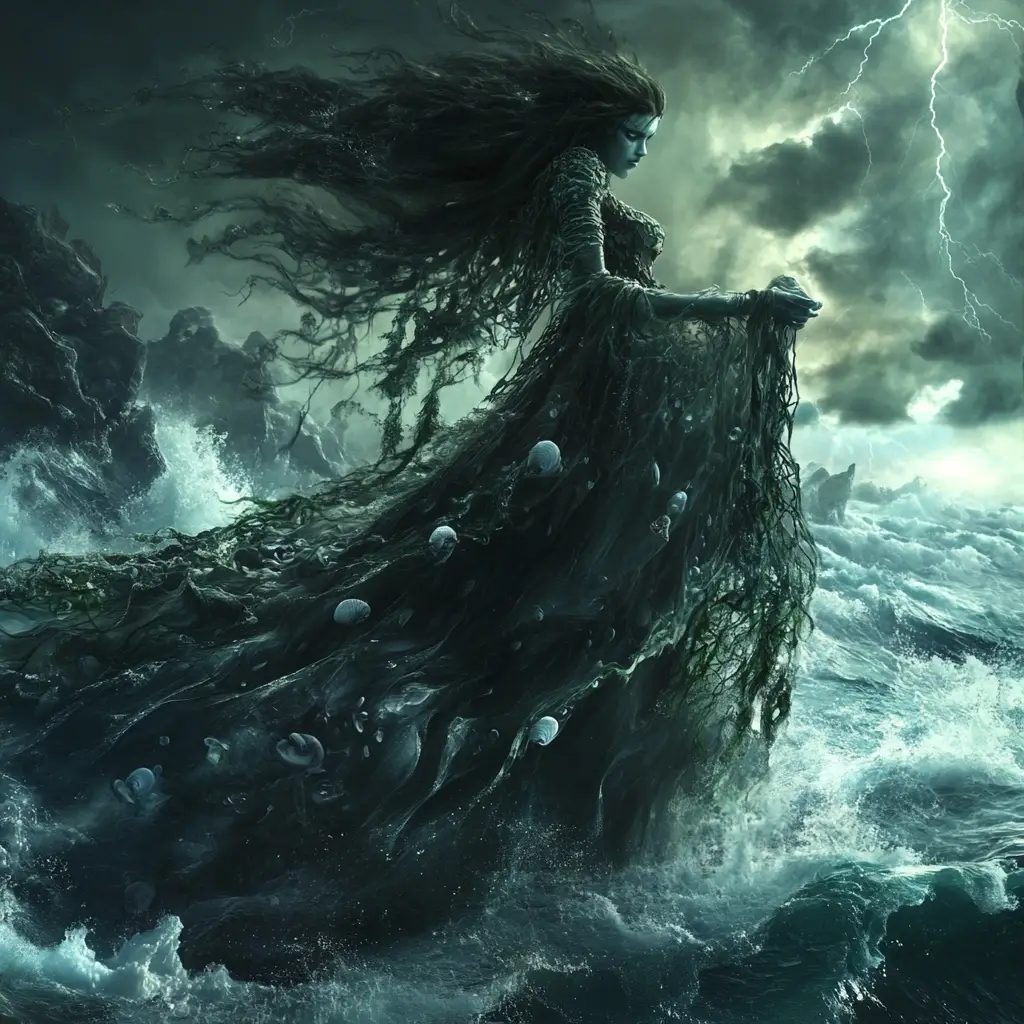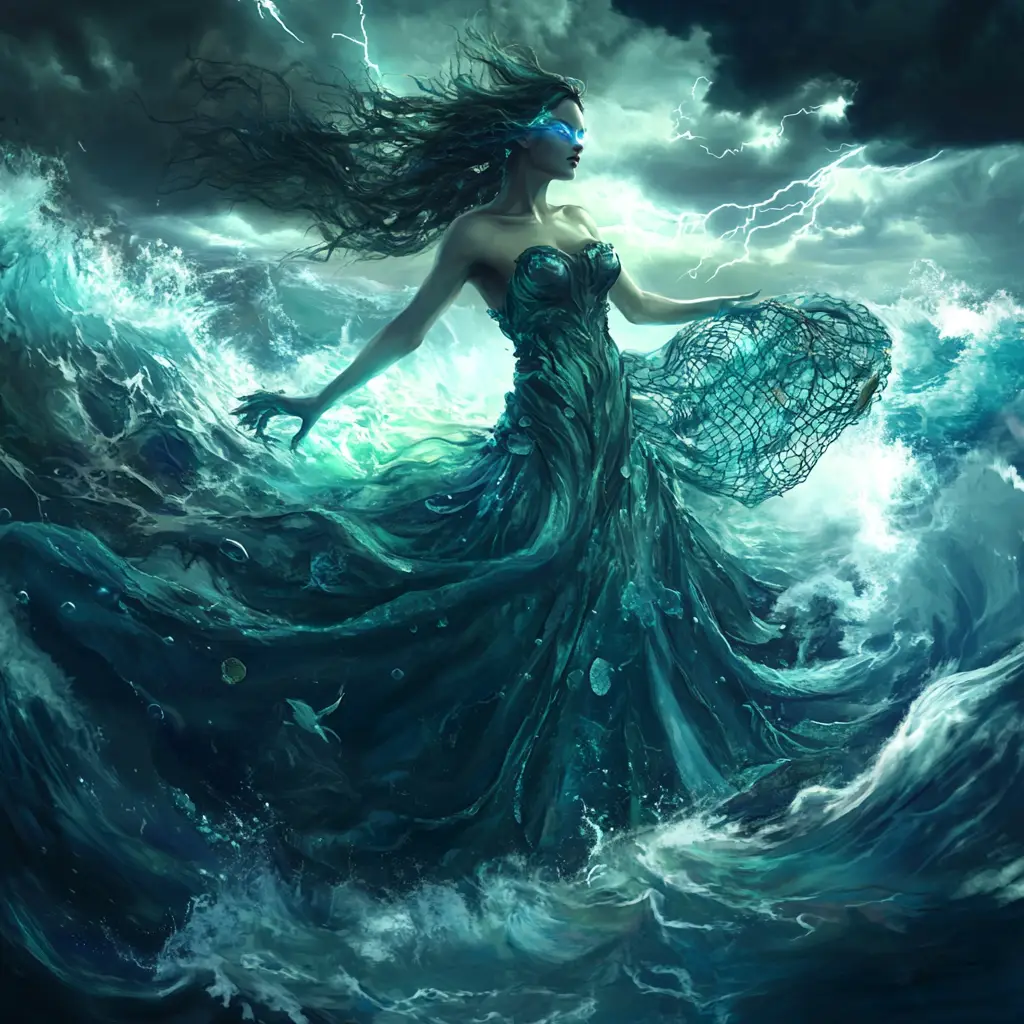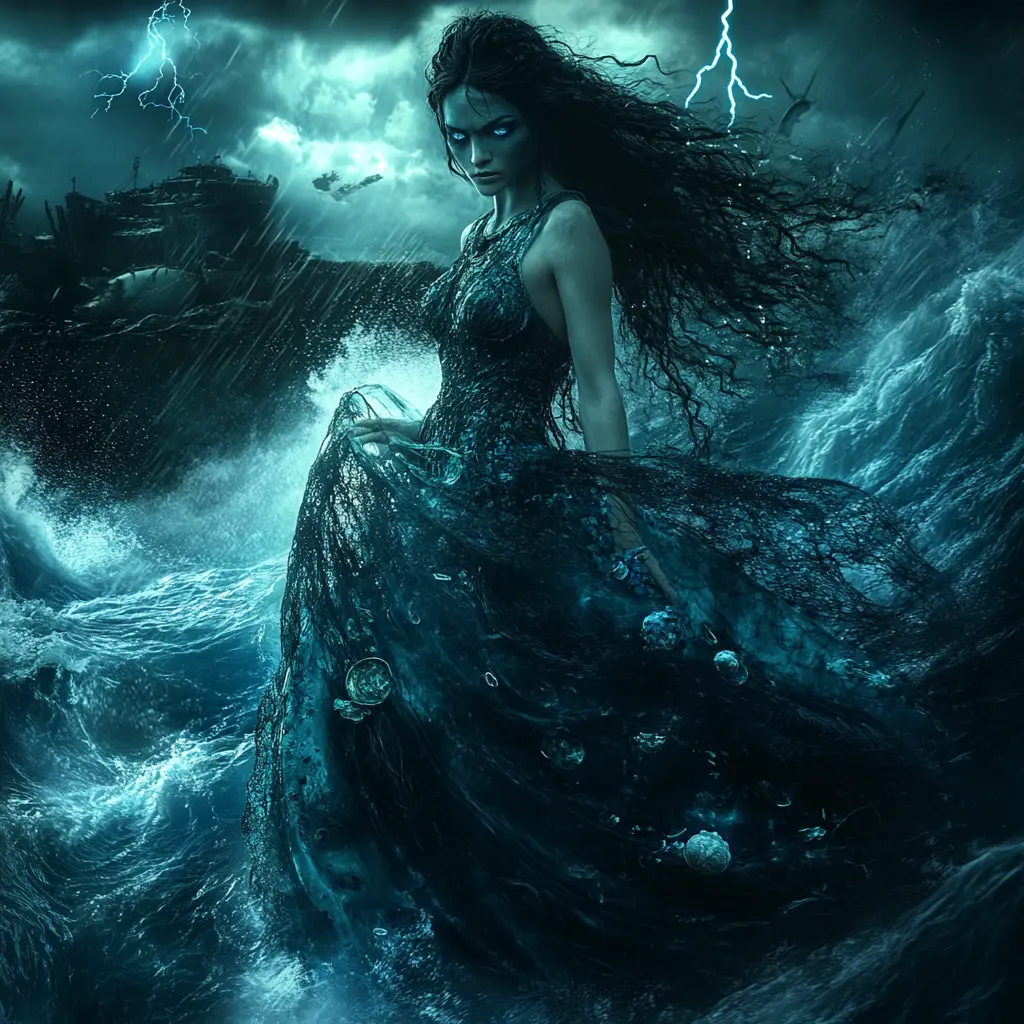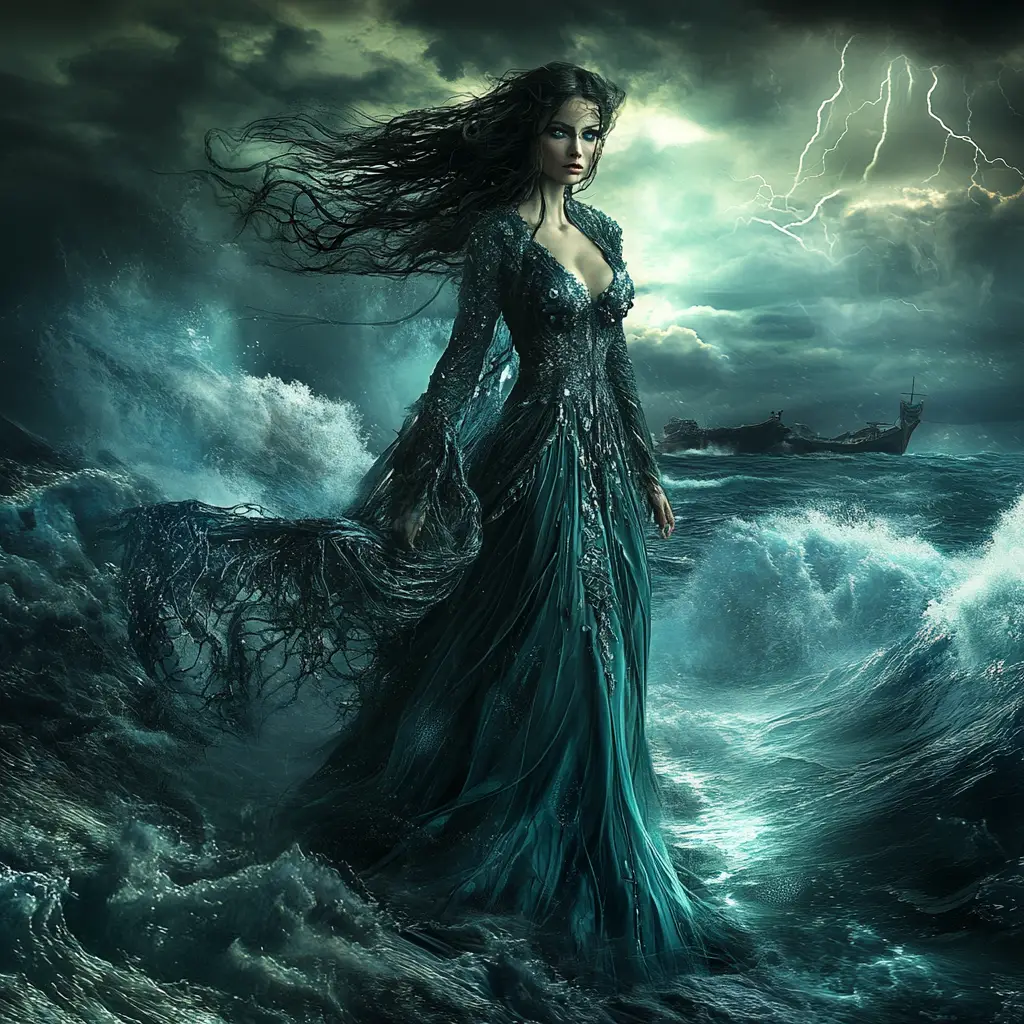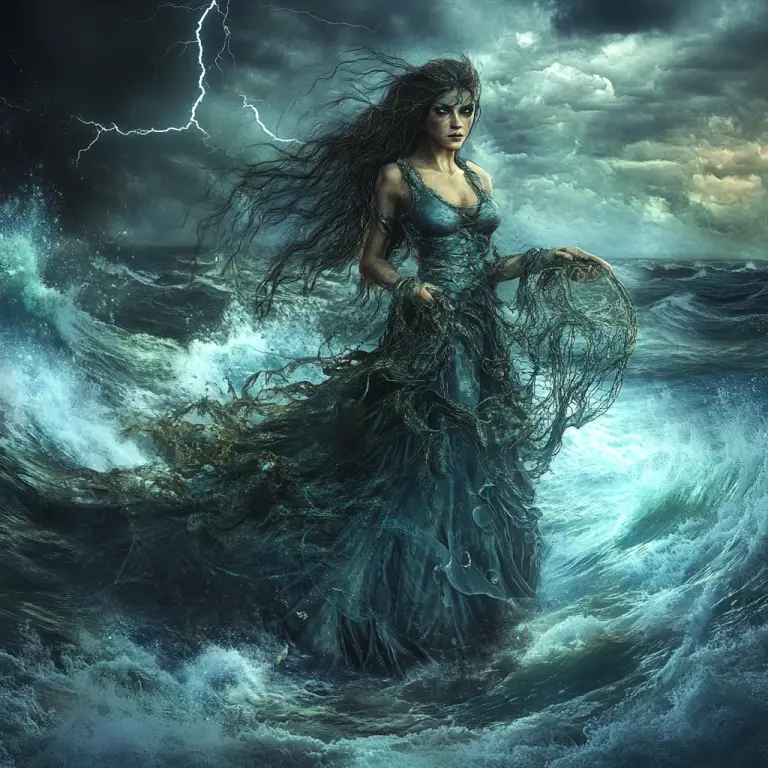Rán is a significant figure in Norse mythology, known as the jötunn (giantess) and goddess of the sea, specifically its darker, more dangerous aspects. She is often associated with drowning, shipwrecks, and pulling lost sailors into the ocean’s depths. Along with her husband Ægir, who represents the more generous aspects of the sea (such as its bounty and hospitality), Rán embodies the more treacherous and perilous forces of the ocean.
Goddess of Drowning and the Sea’s Depths
Rán is famously associated with the act of drowning. She is said to capture sailors who fall into the ocean, ensnaring them in her net. When sailors drowned at sea, it was believed that Rán had taken them to her underwater realm.
The sea, in Rán’s domain, is not just a source of life but also a place of death and danger, symbolizing the unpredictable and often cruel nature of the ocean.
Her Net
Rán’s most important and iconic symbol is her net. She uses it to catch those who drown in the sea, pulling them to her depths. This net was seen as inescapable once someone was caught, making her a feared and respected figure among seafarers.
In some stories, the gods borrow her net for various purposes, such as in the story of Loki using Rán’s net to catch fish, highlighting its importance in both practical and symbolic terms.
Relationship with Ægir
Rán is married to Ægir, the giant who personifies the more benevolent and bountiful aspects of the sea, such as brewing ale for the gods and hosting great feasts in his underwater hall. While Ægir is associated with the beauty and gifts of the ocean, Rán represents the dangers lurking beneath the surface.
Together, they balance the duality of the sea—both life-giving and deadly, reflecting the Vikings’ complex relationship with the ocean as both a vital resource and a constant threat.
Mother of the Nine Waves:
Rán and Ægir are the parents of the Nine Daughters, who are personifications of the waves. These daughters are often referred to as the “Wave Maidens” and are believed to represent different aspects of ocean waves, from calm and gentle swells to fierce and dangerous breakers.
The Nine Waves have mythological importance, as in some traditions, they are linked to the birth of the god Heimdall, who is said to have been born from these wave daughters.
Rán’s Role in Norse Culture:
Sailors in Norse culture both feared and respected Rán, often making sacrifices or offerings to her to avoid being taken by her net. Some sources suggest that sailors would carry gold with them, which was believed to be an offering to Rán in the event they drowned. This gold was considered a way to appease her, ensuring a better afterlife in her underwater realm.
Despite her fearsome role as the taker of lives, Rán was not viewed purely as evil. Like many jötnar in Norse mythology, she represents the natural, untameable forces of the world. Her character reflects the Norse belief in a universe governed by both creation and destruction.
Rán’s Realm:
While her husband Ægir’s underwater hall is described as a place of warmth and feasting, Rán’s domain is darker and colder, associated with the unknowable depths of the sea. She rules over those who die at sea, and her realm is a kind of underwater afterlife for the drowned.
Unlike the halls of the gods such as Valhalla, Rán’s realm is not typically portrayed as a place of glory or reward, but rather as a place of stillness and death, matching the unforgiving nature of the sea.
Symbolism
Rán embodies the danger and unpredictability of the ocean, making her a goddess feared by seafarers who knew the perilous nature of their journeys.
Her role as a goddess of drowning and her use of the net symbolize the inevitability of fate and death, particularly for those who venture into the sea. The sea, in Norse cosmology, is both a source of life and wealth but also of sudden death, and Rán’s presence reminds people of this duality.
In essence, Rán is the personification of the dark and perilous side of the ocean—capable of taking life at a moment’s notice, unpredictable and powerful. Like many deities and figures in Norse mythology, she embodies both the harshness and the awe-inspiring power of the natural world.
